
Thank you for taking the time to check out my post, Want me to audit your campaigns on Google and Facebook?

Thank you for taking the time to check out my post, Want me to audit your campaigns on Google and Facebook?
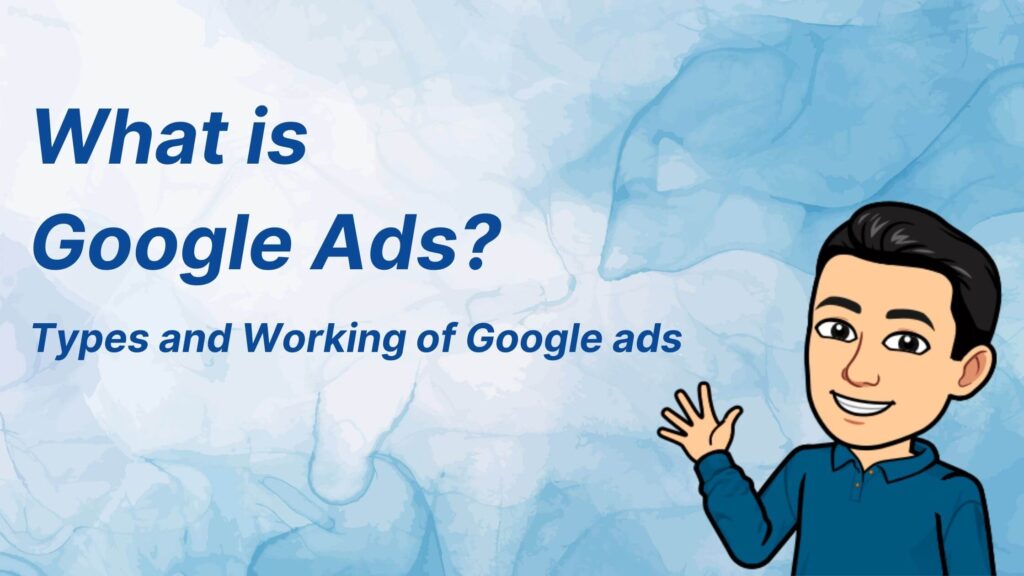
In today’s digital age, online visibility is crucial for businesses. Google Ads has emerged as a powerful tool, offering diverse ad formats to reach target audiences effectively. This blog guide will delve into the nuances of Types and working of Google Ads, providing actionable insights for marketers.
This is not only for marketers but also for business owner, coaches, consultants and any other individual who has some stuff to sell to the world.
Before stepping into the types and working of Google Ads, let’s first understand the basics of Google Ads.
Google Ads, formerly Google AdWords, is an online advertising platform allowing businesses to display ads on Google’s search engine results pages (SERPs) and partner websites. It operates on a pay-per-click (PPC) model, meaning advertisers pay a fee only when users click on their ads.
This means if the users notice your ad and don’t click on it, then Google will not charge you.
If you know little about paid advertising in the digital field then you also know about Facebook Ads. If we compare these two platforms simultaneously then you can easily conclude that Google Ads is bigger than Facebook Ads. Advertisers love to spend more money on Google Ads as compared to Facebook Ads.
Also, Google Ads is a far older ad network as compared to Facebook Ads. Google Ads are also more expensive than Facebook Ads and the results of Google Ads are way more effective as compared to Facebook Ads.
Google Ads advertising is a game-changer for businesses seeking immediate results. By strategically placing ads on relevant platforms, businesses can increase visibility, drive traffic, and boost conversions. Next section will explore the benefits and potential pitfalls of Google Ads advertising.
Search Ads are text-based advertisements that appear on Google’s search engine results pages. These ads are triggered by specific keywords, ensuring relevance to users’ search queries. Learn how to dominate SERPs with compelling Search Ads.
Example: Let’s say if I search dentist near me then the first result will appear in the form of Ad. Search Ads means when you search for a specific product or service on the search engine.
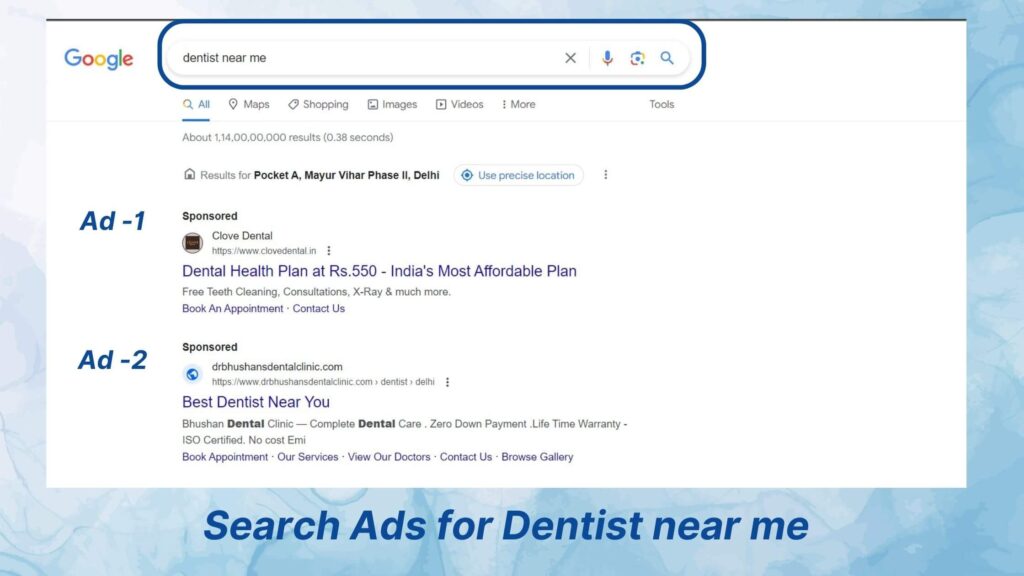
If you notice these results then you will see a small word sponsored is written beside the search result. You will also see there is no image or video for my query, which means it is a text ad.
Except for Sponsored, all other things come under SEO, which is a vast topic, I have written a long blog on How to do SEO on the website, you can check that too.
Display Ads leverage visuals to capture the audience’s attention across the Google Display Network. This section will guide you through creating eye-catching visuals for a broader reach and increased brand awareness.
Example: Let’s say if you go to moneycontrol.com, then you will see some display ads on the website of moneycontrol itself, These ads are so powerful that it can you help you to reach 90% of the audience on the internet.
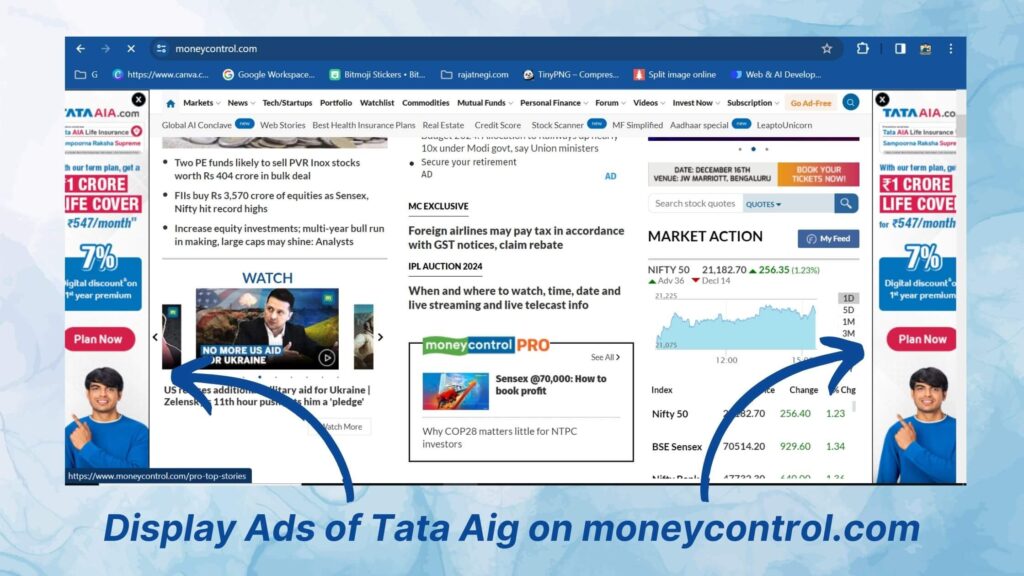
Shopping Ads showcase products directly on the SERPs, making it easier for users to discover and purchase items. Explore the visual appeal of Shopping Ads for effective e-commerce marketing.
Example: Let’s say if i search nike shoes then results will appear in the form of ads, the most important thing here you will notice is image, and right after clicking on product you can purchase that product in the next step.
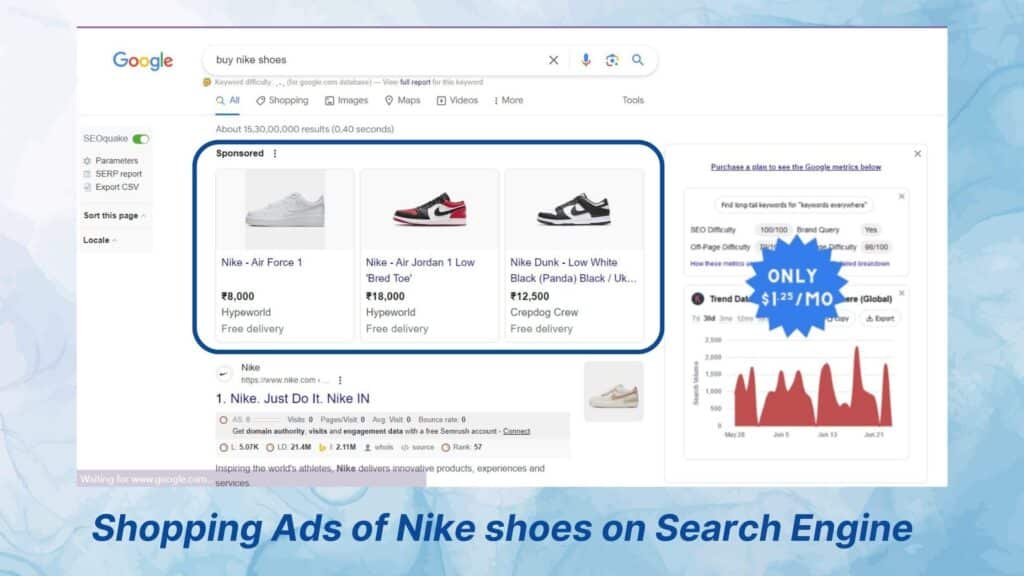
Video Ads engage users through multimedia content. From YouTube to the Google Display Network, discover how to create compelling video content that resonates with your target audience.
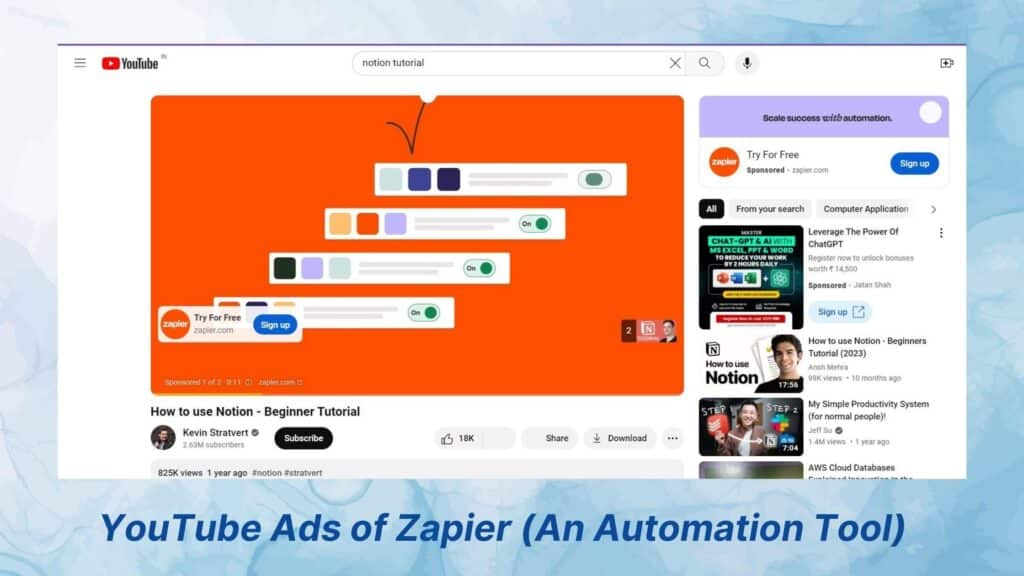
When advertisers embark on a Google Ads search campaign, they embark on a journey fueled by keywords—the veritable lifeblood of online searches. The crux of the matter is creating ads with irresistible offers and selecting a judicious list of keywords that seamlessly align with the essence of the offer. These chosen keywords become the gateway, ensuring that your ad emerges when users embark on a Google search—a pivotal moment known as a query.

Once a user initiates a search on Google, the platform conducts a meticulous check to identify advertisers bidding on keywords pertinent to that search. The ensuing battleground is the Google Ads auction, where relevance and bid amounts become the deciding factors. Here’s the breakdown of how the process unfolds:
Google assigns a Quality Score to each keyword, rating them on a scale of 1-10. This score hinges on factors such as relevance to the query and other undisclosed criteria. The higher the Quality Score, the more favorably Google views your keyword.
To determine an ad’s visibility, Google computes an Ad Rank score by multiplying the Quality Score with the maximum bid set by the advertiser. Advertisers with the highest Ad Rank scores emerge victorious and claim their spot on the Search Engine Results Page (SERP).
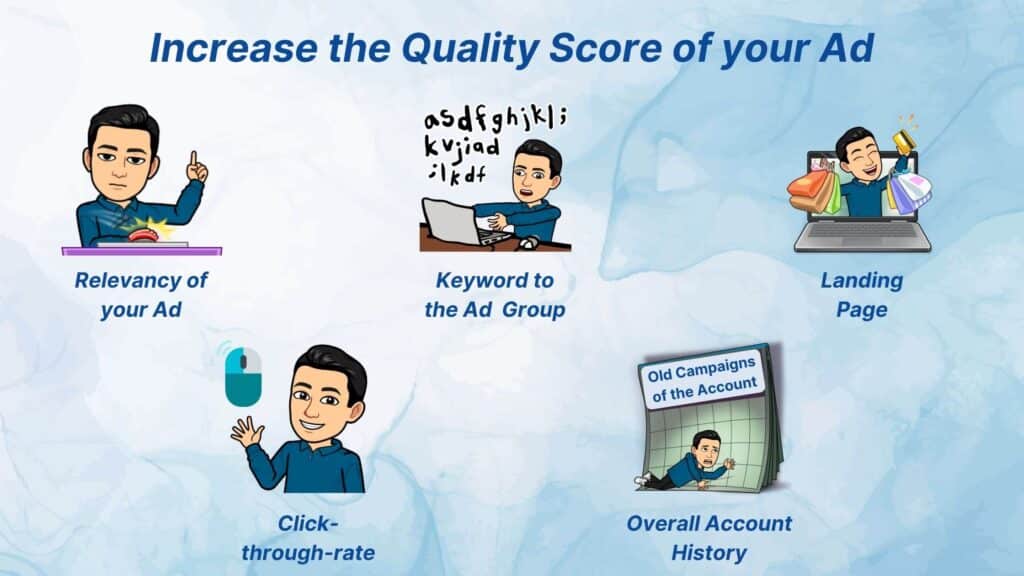
Securing a prime position in Google Ads auctions necessitates a dual focus on optimizing your Quality Score and bid amount. Elevating your ad positioning hinges on a harmonious blend of these two critical components. Various factors contribute to your Quality Score, including:
A high Quality Score isn’t merely a badge of honor; it comes with tangible advantages that can transform the trajectory of your advertising endeavors:
In conclusion, mastering the intricacies of Google Ads requires a holistic approach that combines strategic keyword selection, meticulous Quality Score optimization, and a keen eye on bid management. By aligning your advertising strategy with these principles, you can not only navigate the competitive landscape but emerge victorious, ensuring your Google Ads stand out amidst the digital cacophony.
In the dynamic realm of online advertising, Google Ads reigns supreme, and at its core lies a strategic focus on keywords—the linchpin connecting potential customers with your product or service. Crafting an effective Google Ads search campaign requires more than just creating compelling ads; it demands a nuanced understanding of how keywords can elevate your ad’s visibility.
Hope you Liked my first blog on Google Ads Introduction and that you have learned a few things about types and working of Google Ads.
In the next blog, we will see how to create a new Google Ads Account.
Till then,
Rajat “Introducing Google Ads” Negi.
Logging Out……..